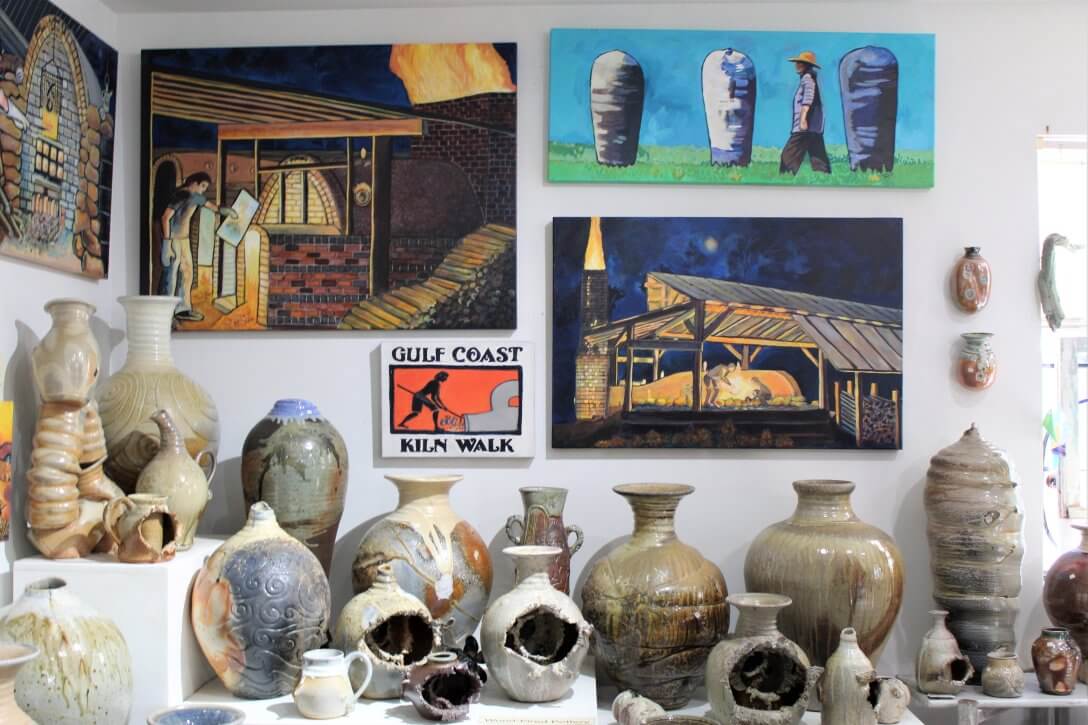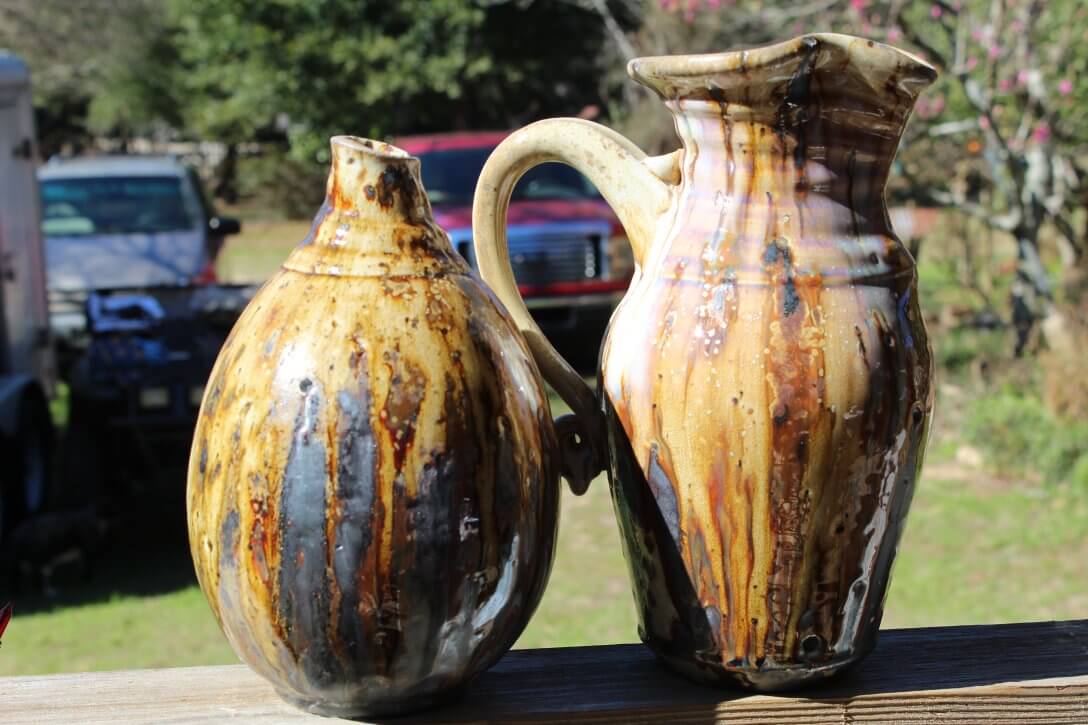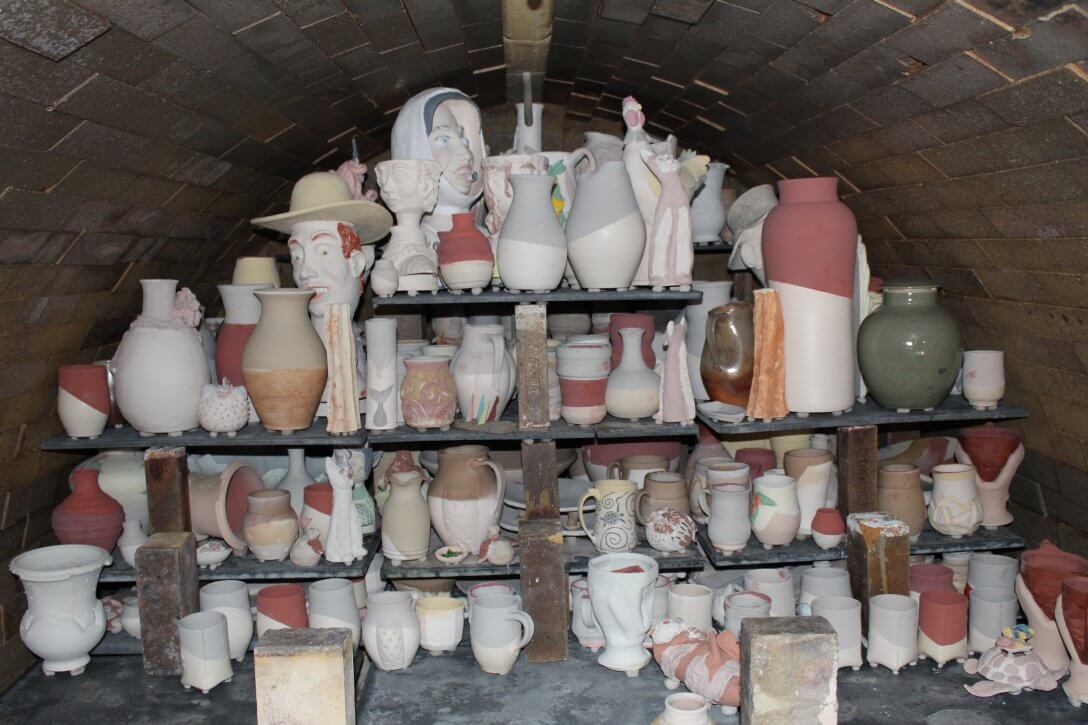
The fascinating and unique results achieved from the use of Japanese-style wood-fire kilns has been documented in ceramics articles since the 1980s, and around the year 2000, wood-fired ceramics sparked the interest of many artistic potters from across the Gulf Coast. After learning that there were no wood-fire kilns available to the public within a 12-hour radius of the Escambia-Santa Rosa County area, Brenda, Marty and Jason Stokes, co-owners of Holley Hill Pottery in Navarre, along with the original members, officially established the Gulf Coast Kiln Walk (GCKW) Society as a 501(c)(3) nonprofit in 2001.
The society is dedicated to the history, preservation and promotion of the wood-fueled ceramic arts, and it strives to build a sense of community through clay related activities—to bring individuals of all ages together to celebrate the ceramic arts heritage and pass it on to future generations. The GCKW brings visitors, beginners, experienced potters and the like through history as they learn how to fire pottery in the society’s two significant kilns, as the name “Kiln Walk” suggests.
In August 2004, Don Reitz, a well-respected wood-fire artist from Arizona, and his former assistant and now Indiana University Southeast professor, Brian Harper, completed the design and build of a 32-foot anagama-style kiln with the help of volunteers and the Santa Rosa County Sheriff’s Department. The kiln was fired up for the first time in December of 2005.
Anagama kilns are a type of kiln that must be loaded from the back to front and, in Japanese tradition, the kiln takes four days to load and can fit more than 800 pieces of pottery at a time. Then, six to 12 people must monitor the kiln 24 hours per-day for six full days, and the kiln must slowly cool for 12 days before it can be reopened.
“It’s a time-consuming process,” Jason Stokes, GCKW Kiln Tech and son of Marty and Brenda Stokes, said. “Every little pot has to be placed exactly how you want it in the kiln because every pot affects the one behind and in front of it. It’s a very delicate and slow dance through the five-day process.”
In 2006, another wood-fire kiln from the 1940s was constructed on the Kiln Walk property. Their historical “Ralph Howard Phillips” Kiln is a working modified “southern groundhog” kiln found in Jay, Florida. After getting permission from the landowners to disassemble the kiln, the society was able to carefully document the kiln and safely move it to the GCKW site. As of today, it is the only kiln of its kind in the state.

To rebuild the kiln, the Stokes family and many society members used new fire brick on the inside and the original red brick inside the firebox and on the exterior of the kiln. These kilns can reach temperatures up to 2,500 °F, so had they continued to use the original brick, it would have slowly melted down to nothing. The project was finished in the spring of 2008 and prepared for its “inaugural” firing in February 2009.
The GCKW Society fires its two kilns once a year in conjunction with the annual WoodStoke Pottery and Kiln Festival, which is held on the second Saturday in February. Nearly 50 potters from all over the southeast United States participate in the monthlong activities on the GCKW grounds, such as workshops and educational activities that happen before, during and after the festival. Today, more than one thousand visitors come to partake in the festivities.
Chris Gustin, a world-renowned studio ceramicist, an emeritus professor at the University of Massachusetts and the GCKW’s designated “wood-kiln whisperer,” as the Stokes family deemed him, helped to alter the anagama kiln. Since then, he has worked closely with the society and is now the WoodStoke Festival’s featured artist for both 2022 and 2023.
Gustin has been surrounded by the ceramic arts his entire life, as his parents managed and co-owned several commercial ceramic factories in Los Angeles. He dropped out of school to work in, and eventually run, one of these factories.
His parents dabbled in collecting ceramics and other handmade wares, so Gustin grew up in a space where ceramics were celebrated. When he was around 20 years old, Gustin left the manufacturing arena and went to the Kansas City Art Institute to study studio ceramics for his undergraduate degree. He then got his graduate degree at Alfred University.
Gustin loved the studio aspect of making pots. He set up his first studio in Guilford, Connecticut, then after five years, left to teach in New York, and then Boston. After being a combination of a teacher and studio artist, Gustin moved to Massachusetts and bought a chicken farm that he renovated into a state of the art studio.
“I got into clay one way and then found another way, and so I started showing and selling my work—and ended up showing in New York—and the career kind of took off,” Gustin explained

Gustin has known about the GCKW for years because of the society’s notable firing workshops. Artists from around the world—Gustin included—have come to lead workshops and utilize the society’s iconic wood-fire kilns. While Gustin was visiting Bailey, North Carolina for another wood-fired kiln festival, he met Jason Stokes, who invited him to come down to the facility and see the kilns firsthand.
Since getting involved with the society, Gustin has started to help the GCKW develop a space that supports the arts and community, where different constituencies can come and use clay to not only learn about ceramics, but also create their own communities of support.
“From a community point of view, you guys have a diamond in the rough there. I don’t know how many people know about it, but it is a really special place and it is accessible. They [GCKW] do workshops, they do programs, they do these firings and of course they have these plans for a much bigger footprint,” Gustin said.
Brenda Stokes and the other members of the GCKW Society are working to construct a multi-use “Historical Working Center” to provide space for educational workshops and research. There will also be a gallery area to display wood-fired ceramic art and historical artifacts. The center will bring education, artistic expression and art appreciation to one location for potters and visitors alike.
“This center will not only be an introduction to what people can learn at the universities, but it will also be a support center for people like my son [Jason Stokes] that come here and need a place to fire,” said Brenda Stokes. “At the same time, famous artists can come here to mentor the lower-level potters.”
Following-up with their mission, the GCKW strives to educate people about the ceramic history and be a support center for potters everywhere. “I’ve seen lives change radically for the better by creating communities that people can go to where they feel safe and supported, and the GCKW is one of those places,” Gustin said.
For more information about the Gulf Coast Kiln Walk Society, visit gulfcoastkilnwalk.org or find them on Facebook @KilnWalk.